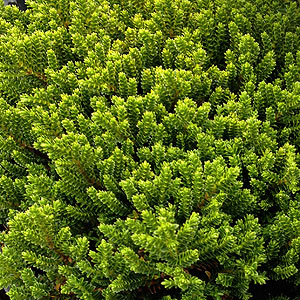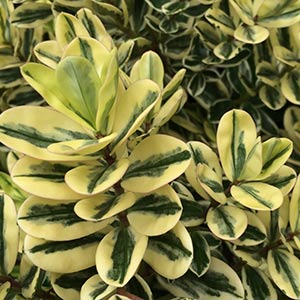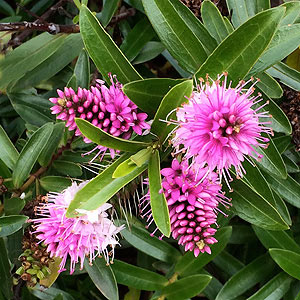
Perhaps not noticed, but widely grown, Hebe plants are an evergreen shrub, easy care and many varieties with attractive flowers.
They grow well in the garden, can be used as hedges and also grow well in containers.
Also known as evergreen veronicas, they are relatively easy to care for and make a great fill in plant for the garden border.
The fascinating thing about Hebes is that with so many species you can find a plant suited to a variety of uses in the garden.
From low growing ground cover plants to tall shrubs for a start. And then we have variety in foliage and flower types as well.
Flowers are generally white to purple, foliage from green to purple, with variegated forms also available.

From low growing ground covers to medium sized shrubs, Hebe’s have a lot to offer the gardener.
Hardiness Zones will differ with variety. The smaller leafed types are suited to USDA Zones 6 – 11. The larger leafed types to USDA Zone 8.
However even within these zones, position in the garden will determine hardiness, a protected position in a colder zone will make it easier to grow them.
Hebe Care
In general all Hebe like a sunny position and a well drained soil. Some are hardier than others, with the whipcord types being the hardiest.
You can grow them in USDA Zones 7 – 11, depending on species. They are very popular in west coast states including California, Washington and Oregon. but also in New York and Maine. And in every other state they are grown to some extent.
A few species will grow well in coastal conditions, but not all. Soil conditions are not a problem, Hebe will grow in poor soil, although they do perform better in a humus rich moist soil, as long as drainage is good.
Top Tips
- Grow Hebes in well drained soil
- A Position in full sun to a little shade.
- A little light prune after flowering will keep them in shape.
- Most will grow in coastal conditions.
- Height will vary depending on variety.
Generally they are not suited to sub tropical climates.
Summary
- All varieties require a well drained soil.
- Smaller types do well in pots and containers.
- Hebe prefer plenty of sun however they will also cope with part shade.
- In heavy shade they tend to struggle and become a little ‘leggy’.
- Hebe plants do respond well to pruning.
- Trimming back or pinching out spent flower heads will also encourage new growth and a bushy habit.

Hebe Varieties
Basically two leaf types characterise Hebes, some have oval leaves, while another group have smaller leaves and these are called ‘whipcords’.
Foliage also differs in terms of color, from light green to deep dark green.
Flowering also differs, some with small almost insignificant flowers others with masses of larger flowers over long periods.
Foliage may also be naturally very dense on some species and looser on others
Landscaping Uses
Planted in the garden or in containers, choose the position according to the variety. The flowering types are best grown where they can be appreciated.
The low growing ground cover types are great as fillers, or when grown in the rock garden.
In containers try the smaller growing varieties, they are long lasting and easy care.
Hebe Plants are available for sale Online from the following nurseries
TINY TREASURES NURSERY – phone: 503-463-8602 fax: 503-390-0028
PO Box 20250 Keizer OR 97307
www.tinytreasuresnursery.com
BRAMBLE BANK GARDEN NURSERY – phone: 5418673846
3 S.Coast Hwy South Beach Oregon postcode: 97366
www.bramblebank.com
DIGGING DOG NURSERY – phone (707) 937-1130
PO Box 471 Albion CA 95410
www.diggingdog.com
SEQUIM RARE PLANTS
500 N. Sequim Ave. Sequim, WA 98382
www.sequimrareplants.com

